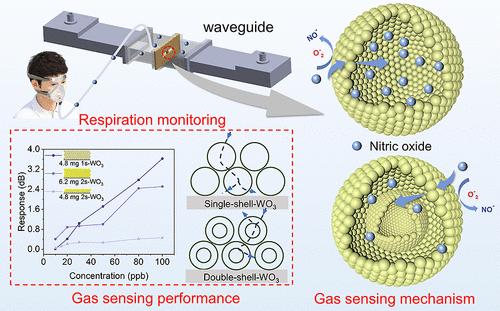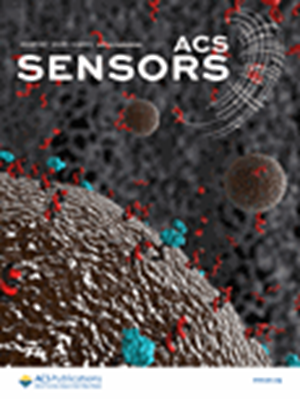Waveguide-Based Microwave Nitric Oxide Sensor for COVID-19 Screening: Mass Transfer Modulation Effect on Hollow Confined WO3 Structures
IF 8.2
1区 化学
Q1 CHEMISTRY, ANALYTICAL
引用次数: 0
Abstract
Serious acute respiratory syndrome coronavirus-2 (SARS-CoV-2) poses a tremendous threat to global public health. Recently, the Food and Drug Administration approved the emergency use of volatile organic components as detection biomarkers for COVID-19, ushering in a new era of portable, simple, and rapid epidemiological screening based on breath diagnosis. Nitric oxide (NO) is an important biomarker indicating the degree of inflammation in the respiratory tract. In this study, a hollow multishelled structured WO3 (HoMSs-WO3)-based waveguide microwave gas sensor (MGS) was fabricated to detect trace levels of NO in exhaled breath for the preliminary diagnosis of COVID-19. The sensor showed excellent reusability and selectivity and efficiently detected NO in the 10–100 ppb, with a sensitivity of 39.27 dB/ppm and a detection limit of 2.52 ppb. In addition, a sound correlation was observed in the measurement results between the MGS and the Sunvou detector for detecting NO from the exhaled breath of clinical COVID-19 patients. The difference between the two measurements was within 1.96 standard bias, and the consistency range was −12 to 17 ppb, thus fully demonstrating the significant potential of the sensor in COVID-19 screening.

求助全文
约1分钟内获得全文
求助全文
来源期刊

ACS Sensors
Chemical Engineering-Bioengineering
CiteScore
14.50
自引率
3.40%
发文量
372
期刊介绍:
ACS Sensors is a peer-reviewed research journal that focuses on the dissemination of new and original knowledge in the field of sensor science, particularly those that selectively sense chemical or biological species or processes. The journal covers a broad range of topics, including but not limited to biosensors, chemical sensors, gas sensors, intracellular sensors, single molecule sensors, cell chips, and microfluidic devices. It aims to publish articles that address conceptual advances in sensing technology applicable to various types of analytes or application papers that report on the use of existing sensing concepts in new ways or for new analytes.
 求助内容:
求助内容: 应助结果提醒方式:
应助结果提醒方式:


